The 3rd Foreign Parachute Regiment (3e REP) was a Foreign Legion airborne unit constituted as a battalion (3e BEP) in Algeria in 1949. The unit trained legionnaires to become paratroopers being able to take part in the First Indochina War (1946-1954). The unit’s another mission was maintaining order in France’s North Africa. The 3e BEP also served as a transit unit for veterans returning from Indochina.
Twice in history, the battalion restored the other two parachute battalions of the Legion annihilated during the battles in Indochina.
The battalion became the 3e REP in 1955. It remains the shortest living regiment (only 13 weeks) of the French Foreign Legion. The 3e REP was disbanded in late 1955, to help constitue the well-known 2nd Foreign Parachute Regiment (2e REP).
La version française de cet article: 3e Régiment Étranger de Parachutistes
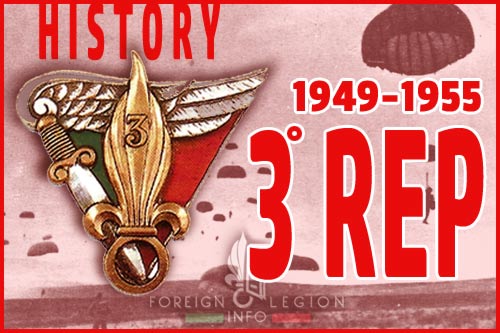
3rd Foreign Parachute Battalion: Before the creation
In Southeast Asia in late 1946, an armed conflict started between France and the Viet Minh, a nationalist movement of Ho Chi Minh. The movement declared independence from France for Vietnam, part of then French Indochina. French troops, including legionnaires, had to deploy to Indochina to save and restore the French empire. The war continued; more and more units were needed.
In 1948, two Foreign Legion airborne battalions were constituted (1er BEP and 2e BEP) to take part in the Indochina war. To keep their operational strength, a training unit providing new reinforcements was to be created.
7e CIP: 7th Parachute Training Company
In North Africa, the 7th Parachute Training Company (Compagnie d’instruction parachutiste, 7e CIP) was established on April 16, 1949. A Foreign Legion airborne training unit, the 7e CIP was organized in Mascara, one of the two long-serving instruction centers of the Legion, situated in northwestern Algeria. Then Algeria was both an integral part of France and a homeland for the Foreign Legion.
The 7e CIP, led by Captain Pierre Darmuzai, would be assigned to the 2nd Battalion, 1er REI. Among the company officers, there were Lieutenant Geroges Marce or Second Lieutenant De la Croix Vaubois. The main mission of the 7e CIP was to provide basic parachute training for young legionnaires asking to serve in an airborne battalion.
The 7e CIP stayed in Mascara until October 1949. Then, the unit left the instruction center for Sidi Bel Abbes, the main garrison town of the Foreign Legion since the 1860s, with the Legion HQ. The company was reinforced there with new volunteers to become a new battalion. After a few weeks in Sidi Bel Abbes, the unit moved to northeastern Algeria, to be eventually stationed in Sétif. At that time, the 7e CIP comprised some 250 men in total.
3e BEP: 3rd Foreign Parachute Battalion 1949-1951
In Sétif, the reinforced company would be re-designated. On November 15, 1949, the 7e CIP became the 3rd Foreign Parachute Battalion (3e Bataillon Etranger de Parachutistes, 3e BEP). The leadership would be kept by Captain Pierre Darmuzai.
The freshly established battalion was composed of around 250 men and consisted of a HQ unit + three companies (9th + 10th + 11th). It was stationed at Caserne Chadeysson, an old French Army barracks. The barracks served as a former base of the 2e BEP, before the unit left Algeria for Indochina in early 1949. The 3e BEP was assigned to the 41e DBP (Parachute Demi-Brigade).
The legionnaires were trained in Philippeville, a town located some 110 miles (180 km) north-east of Sétif and a home to the 41e DBP. In Philippeville, the brigade operated its CES (Parachute Training Center) there, the only CES in Algeria at the time. The 3e BEP legionnaires were trained there by regular French paratroopers. They attended the training course with future paratroopers of the French Army regular units.
Three months after the creation of the battalion, in mid-February 1950, the first reinforcement left Algeria for Indochina. The group comprised about 100 legionnaires of the 3e BEP. In Indochina, they would be assigned to the two BEPs.
Later that year, the insignia of 3e BEP was designed by the battalion commander, Captain Darmuzai.
In August 1950, another important reinforcement provided by the 3e BEP deployed to Indochina. A company of Lieutenant Loth, consisting of 130 men.
The next month, Lieutenant Buonfils took command of the 11th Company. Lt Colonel, he will be the commanding officer of the 13e DBLE in Djibouti in 1970-1972.
In October 1950, a fierce battle took place in Northern Vietnam, along Route Coloniale 4 (a French colonial road). The whole 1er BEP was annihilated in this battle and became the very first French airborne battalion lost in combat. The company of Lieutenant Loth participated and was annihilated too.
As a result of the battle, the 3e BEP would be shipped to Indochina as a whole, to re-create the 1er BEP. In mid-February 1951, Captain Darmuzai and 13 officers, 32 non-commissioned officer + 441 legionnaires left Algeria. A month later, in Northern Vietnam, the battalion was reinforced by a company of the 2e BEP and became the new 1er BEP.
In Sétif, only a 3e BEP depot remained. It was led by Major Albert Brothier, who took administratively command of the 3e BEP staying in Algeria in mid-January 1951. The depot would be reinforced by fresh volunteers coming from Sidi Bel Abbes. A new 3e BEP would be re-established within the next few months.
That year, the battalion under Major Brothier adopted a green beret as their headgear, instead of a white or khaki-covered kepi (for ceremonies or maneuvers outside barracks respectively). The traditional white kepi would be worn only with the Foreign Legion’s tenue de parade, parade uniform. The green beret was first used by Legion paratroopers in Indochina in 1948-1949, within the 3e REI’s Cie Para. In 1951, both BEP battalions adopted it there and the 3e BEP followed. Eight years later, in late 1959, the green beret would be prescribed as the official headgear for the entire Legion.
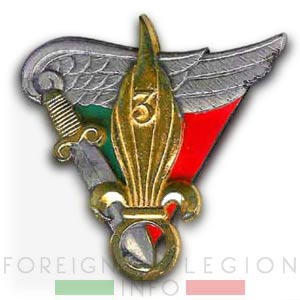

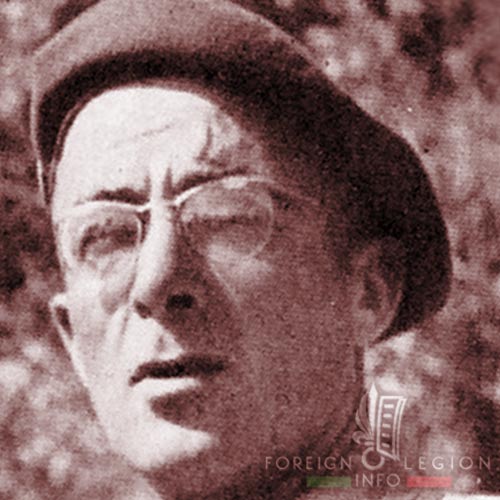

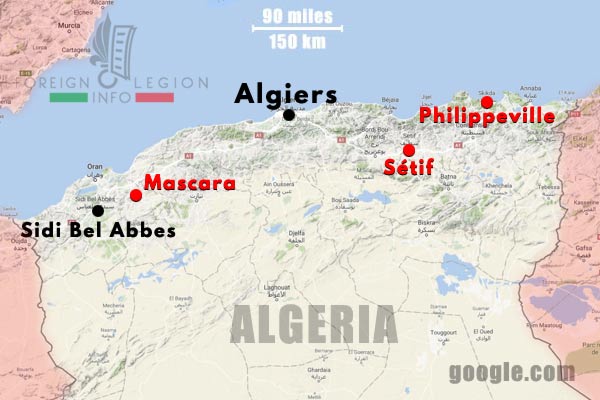
3e BEP: 3rd Foreign Parachute Battalion 1952-1954
3rd Foreign Parachute Battalion in 1952
In early 1952, rebel activities affected Tunisia, a country bordering Algeria in the east and a French protectorate since 1881. French troops were alerted in the northeastern Algeria, including the 3e BEP, to support those troops stationed in Tunisia. Among them, the Legion’s 6e REI.
In late January 1952, Operation Mars was launched. It was aimed at Tunisian left-wing rebels led by Habib Bourguiba. The 3e BEP deployed to Tunisia on January 24, to take part in the operation, alongside their comrades from the 6e REI. Two days later, the battalion was stationed at Bou Ficha, a town situated about 35 miles (60 km) south of Tunis, the capital. The legionnaires operated in the Cape Bon peninsula, at Tazerka or Nabeul.
Between February 4-10, the battalion maintained order at http://foreignlegion.info/sousse/, a garrison town and a home to the Foreign Legion cavalrymen from the 1er REC in 1922-1940 and 1955-1956. In mid-February, the Legion paratroopers maintained order at Gafsa and Sfax. The 9th Company, 3e BEP patrolled at Gabes at the time.
In Sousse on March 12, a detachment of the 3e BEP attended a ceremony organized at the local Legion cemetery to commemorate fallen legionnaires buried there, in the presence of former 1er REC legionnaires led by Adjudant-chef Millarewsky and Colonel Gardy, the then chief of the Foreign Legion (and a former 1er REC officer).
Eventually, the rebellion was successfully suppressed and in early July 1952, the little-known operation was over. The 3e BEP returned to Sétif.
Meanwhile, in mid-May 1952, Major Paul Dussert took command of the battalion. Major Brothier left the 3e BEP to be deployed to Indochina to replace Captain Darmuzai in the lead of the 1er BEP (ex-3e BEP).
Major Dussert had already served in Indochina. He was among first Legion elements to land there, as a commander of the 1st Company, 2e REI in early 1946. Then, he served with the 2e BEP (1948-1950), in the end as its provisional commander. He remains a little-known officer of the Foreign Legion, however.
To commemorate the fallen Foreign Legion paratroopers, a War Memorial was constructed at the Field of Honor of the 3e BEP’s barracks in Sétif, under the supervision of Lieutenant Audoye, a former platoon leader with the Cie Para in Indochina. The War Memorial was inaugurated by Colonel Gardy on October 5, 1952. Fifteen years later, in 1967, the Memorial would be transferred to Corsica to be placed inside future Camp Raffalli, the military base of the 2e REP (ex-2e BEP).
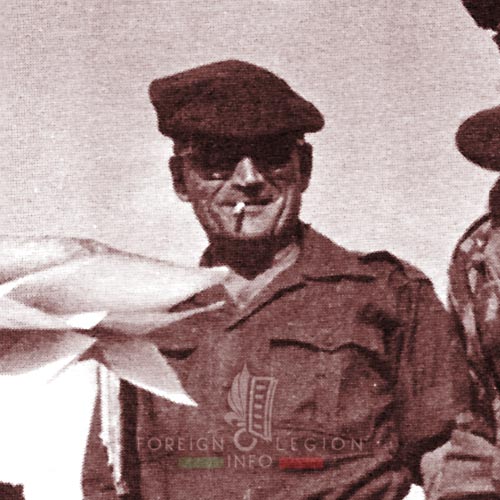
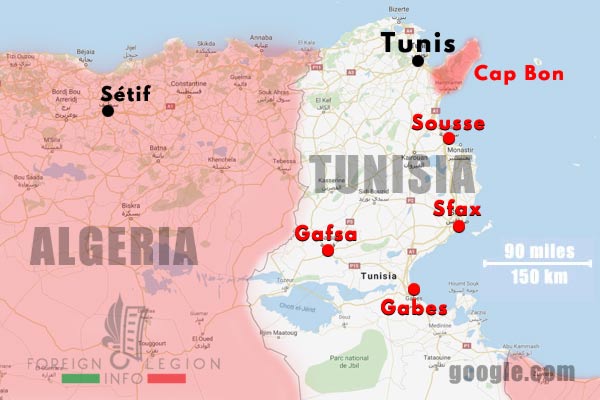


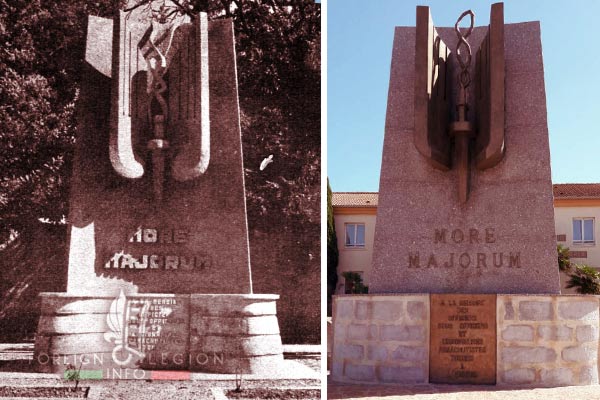
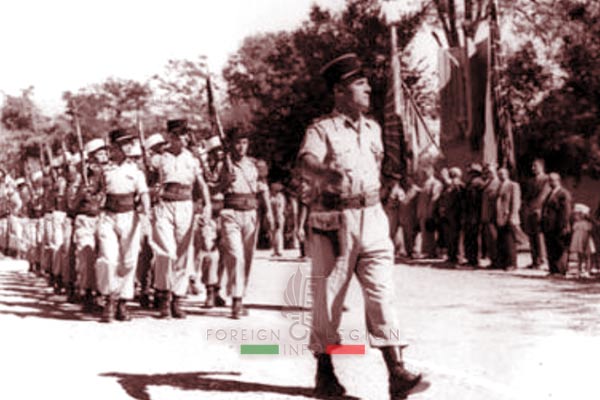
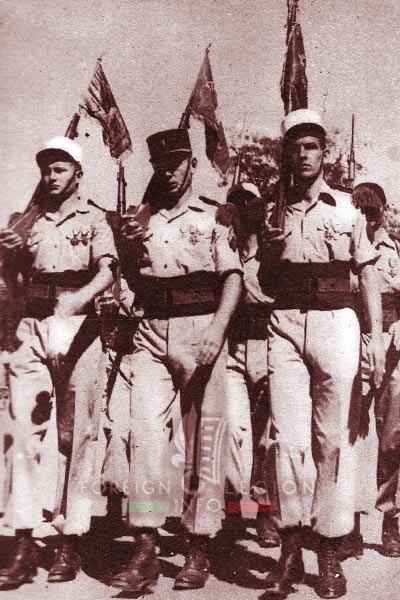
3rd Foreign Parachute Battalion in 1953
There are only a few information on the 3e BEP in 1953. At that time, all Foreign Legion units stationed in North Africa were providing training of new volunteers and fresh legionnaires. The situation in French Indochina was going from bad to worse. French officials asked the Legion to deploy more troops there. As a consequence, the Foreign Legion units in North Africa were considerably reduced to their limits, which hurt even the 3e BEP.
In early January, a new company was established within the battalion, Paratrooper Depot Company. The company was led by Captain Xavier Hochart, a former member of the 1er BEP in 1948-1950.
The 3e BEP continued its training mission. It also served as a transit unit for veterans from both the 1er BEP + 2e BEP. After a prescribed two-year stay in Indochina (sometimes even prolonged), they returned to North Africa and, as paratroopers, were sent to the 3e BEP. A majority of these veterans stayed only a few months in Algeria. They asked to be deployed once again to Indochina. To see action, old comrades, and much more fun and nicer women in the so-called paradise, regardless of the ongoing war, than in Algeria.
The battalion participated in a number of military exercises, like that one in the Oran region of northwestern Algeria. If needed, a company team was able to help to maintain order in the region. The 3e BEP also carried out a lot of sports activities. Within the battalion, several sports teams had been organized. They played soccer (football), volleyball, handball or did judo. In 1953 and 1954, the 3e BEP’s handball team became military champions of Algeria.
3rd Foreign Parachute Battalion in 1954
In February, large military maneuvers took place at Oujda, Morocco. Another French protectorate, situated west of Algeria. The 3e BEP were involved and stayed a week there.
At the same time, more and more drafts were arriving in Sétif to join the battalion. The situation in Indochina was bad. In mid-March, a decisive battle began there: Battle of Dien Bien Phu. Both BEPs participated. A few weeks later, the officials decided that another Foreign Legion battalion should deploy to Indochina and, if needed, to jump over Dien Bien Phu.
In mid-April, Major Georges Masselot took command of the 3e BEP. A well-known Foreign Legion officer, badly wounded with the 12e REI in France in 1940, he replaced Major Dussert who refused to return to Indochina. On May 4, Major Masselot and around 500 men left Algeria for Indochina.
Three days later, the Battle of Dien Bien Phu was over. Both BEPs suffered heavy losses and were kept as lost. On May 25, the 3e BEP landed at Hai Phong, Northern Vietnam. By a new decision, the unit would become a new 2e BEP on the 1st of June. The re-created battalion was reinforced by several ex-2e BEP elements from the ex-2e BEP’s dissolved depot and by wounded men from hospitals. Some 120 local auxiliaries also joined the new 2e BEP.

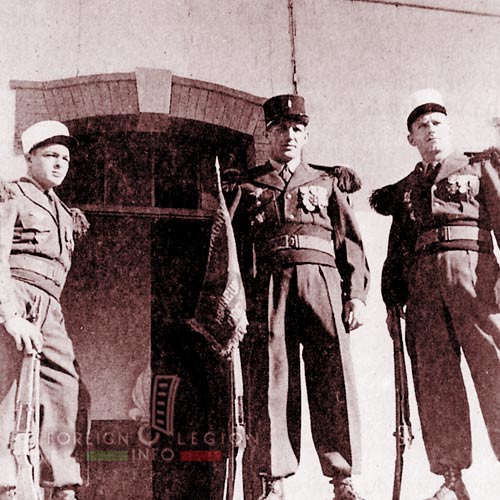


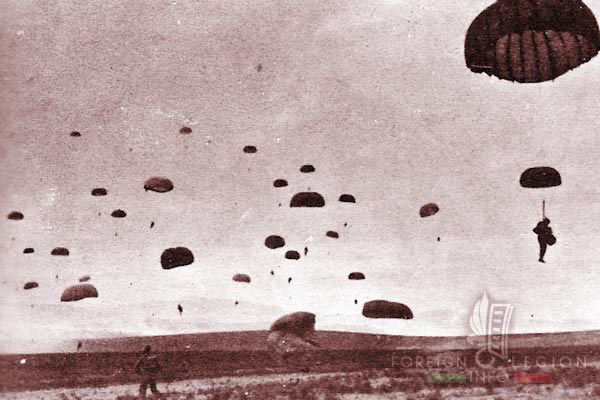

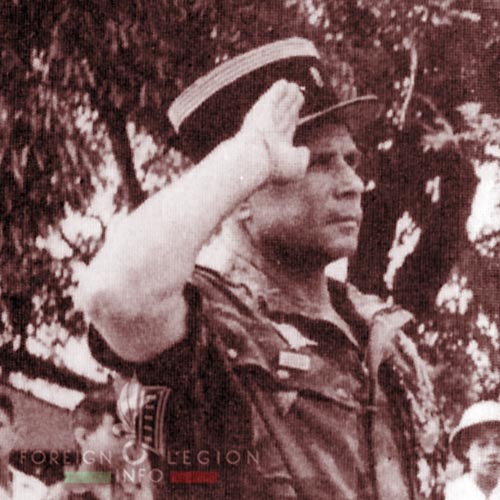
BEPs’ Depot in 1954
Meanwhile, a small depot remained in Sétif, re-titled to BEPs’ Depot (Depot des BEP). Major Dussert (ex-3e BEP) continued as the Depot’s commander. The Depot was formed by the Paratrooper Depot Company now commanded by Captain Ferrer. The BEPs’ Depot was administratively assigned to the DCLE (Foreign Legion Depot, now 1er RE). The unit continued in providing parachute training for fresh legionnaires and rotations to strengthen the two restored BEPs in Indochina. However, not for a long time.
In August 1954, the First Indochina War was over. For the 1er BEP + 2e BEP, the military operations ended. All French troops, including all Foreign Legion units, had to leave Indochina, after more than 70 years of the French presence there.
In Philippeville, Depot legionnaires conducted monthly jumps over the local military beach. A jump also took place in Arzew, northwestern Algeria, at the border with Morocco. A Junkers (Ju 52) aircraft flew five hours with the Legion paratroopers there. Besides, a shooting challenge was organized by the 41e DBP, in which the BEPs Depot distinguished themselves.
However, the relatively calm life came to an end. In North Africa, another conflict for France would start. In November 1954, local rebels launched general uprising and attacked French targets, both military and civilian. During the next months, these rebel actions would escalate into the Algerian War (1954-1962).
Because of that, operations to maintain order started for the BEPs’ Depot. In November, several Depot detachments operated east of Sétif, in the Constantine region. A company team (5 officers + 155 men) patrolled in the Aures Mountains of eastern Algeria, between Batna and Arris. The team also patrolled between Biskra and Khenguet Sidi Nadjil, up to 100 miles (160 km) south-east of Sétif. The company team operated in the region until late January 1955.
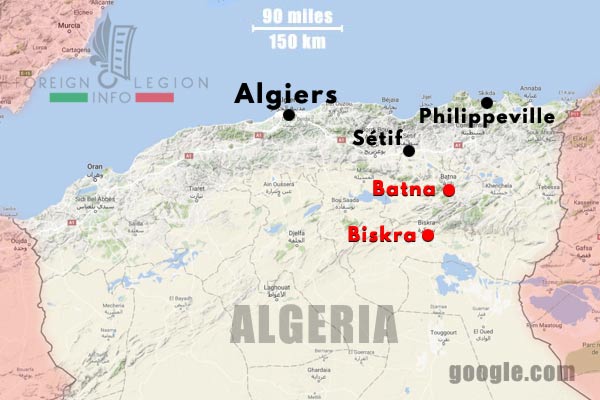
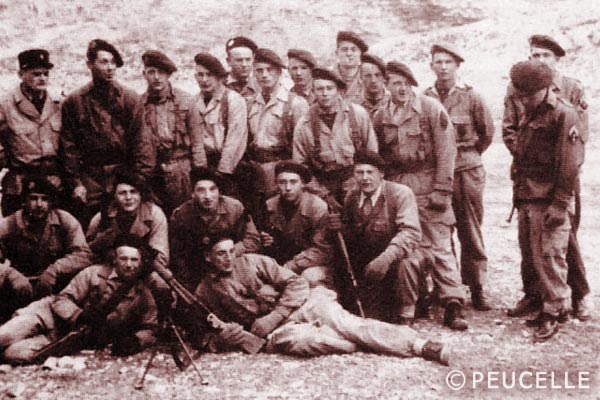
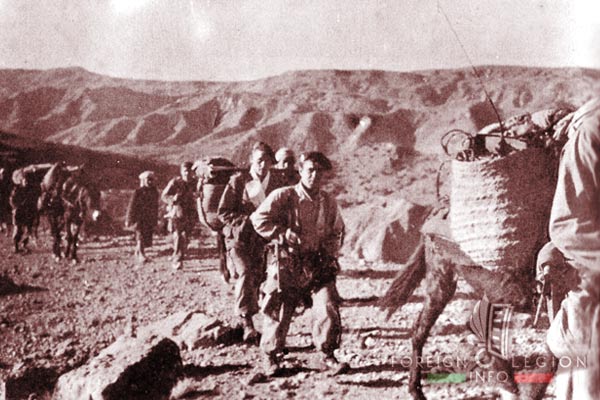
3e BEP: 3rd Foreign Parachute Battalion 1954-1955
While the 1er and 2e BEP were still deployed in Indochina and the situation in North Africa became worse, the former parachute battalion had to be re-established. For the third time, the 3rd Foreign Parachute Battalion was born in Sétif on December 1, 1954. The 3e BEP was led by Major Dussert again, although temporarily.
The missions of the battalion changed because of the end of the war in Indochina and due to the growing rebel activities in Algeria. Even if it was still providing training, the 3e BEP became primarily an operational unit to maintain order and to face local rebels.
3e BEP’s composition in 1954-55
- HQ Company
- 9th Company (Captain Audigier)
- 10th Company (Captain Borel)
- 11th Company (Captain Allaire)
- Combat Support Company (Compagnie d’Appui, CA)
Note the companies’ numbering. The reason is the French Army system. That’s why the 1er BEP consisted of the 1st-4th Company and the 2e BEP consisted of the 5th-8th Company.
In mid-January 1955, a Change of Command ceremony occurred. Major Pierre Darmuzai took command of his old battalion which he helped to establish in 1949. Major Dussert left the 3e BEP, after almost three years of leadership.
In April 1955, the 3e BEP still operated in the Biskra sector. In May, the unit moved to Batna, a town in the Constantine region, south-east of Sétif. It was placed at Transit Camp (Camp de Passage), a military field camp of the French Army. The battalion would stay there until early November 1955.
On July 20, a skirmish with local rebels took place at Djebel Bosdane, north-west of Batna. A platoon of Aspirant Cevaer from the 10th Company, 3e BEP were involved. A rebel was killed, several rebels were imprisoned. It was the first rebel killed by the 3e BEP in Algeria. In August, the men were involved in operations in the El Mhader range, north-east of Batna.




3e REP: 3rd Foreign Parachute Regiment
In 1955, the reorganization of the French Army led to a re-designation of the 3e BEP in Algeria. The battalion stationed at Batna became the 3rd Foreign Parachute Regiment (3e Regiment Etranger de Parachutistes, 3e REP) on September 1, 1955. The leadership of the new regiment was kept by Major Pierre Darmuzai. The 3e REP continued in carrying out its old missions. It served as an operational unit to maintain order in eastern Algeria and to eliminate local rebels. Besides, it trained future paratroopers.
3e REP’s composition
- HQ Company
- 9th Company
- 10th Company
- 11th Company
- Combat Support Company
As we can see, the composition remained unchanged, just as did the strength. The then average 3e REP platoon consisted of about 15-20 men, which means up to 400 men in total. However, the 3e REP wasn’t the only airborne regiment of the Legion in North Africa. At the same time, the 1er BEP was also re-titled. It became the 1er REP. The unit had been stationed in Algeria since late February 1955, after having returned from Indochina.



In September-November, the 3e REP conducted operations in the Batna sector and in the Khenchela region, situated east of Batna. The Combat Support Company operated in the south, in the Biskra region. On September 18, a skirmish with local rebels occurred north-west of Khenchela. The 9th Company, 3e REP were involved. During the skirmish, a rebel group was annihilated (a leader + 10 men); two legionnaires were wounded.
On October 1, the 3e REP was officially stationed at Caserne Mangin in Philippeville. Nevertheless, only its rear base of Captain Ferrer was placed there. The rest of the regiment remained in the south, in the regions of Batna and Biskra. On November 9, the 3e REP left their field camp of Batna and moved to the town, to be placed at a local college.
Later that month, the operations intensified. On November 17, the 3e REP men were involved in another skirmish with local rebels. The skirmish took place at Djebel Amrane, east of Batna. A platoon led by Lieutenant Branca from the 11th Company, 3e REP participated. That day, four rebels were killed and four rebels were imprisoned.
Two days later, on November 19, even the 10th Company, 3e REP participated in a skirmish with rebels. This time, at Djebel Fortass of the Constantine region. However, Lieutenant Raymond Cherfallot became the first Legion Paratrooper officer killed in North Africa. Shot during this skirmish, Raymond Cherfallot was a long-serving airborne officer of the Legion. Seven years earlier, in mid-November 1948, he landed with the 1st Company, 1er BEP in Indochina.
The 9th Company faced rebels on November 26, at Djebel Maaguel, north of Batna. A legionnaire was killed, another legionnaire was wounded.
While the 3e REP fought with Algerian rebels, the 2e BEP of Major Masselot (in fact, the ex-3e BEP) returned to Algeria from Indochina. The most awarded among the three Foreign Legion airborne units, the 2e BEP landed in Algeria in mid-November and was sent to Philippeville. Even this unit was to be raised to a regiment. However, there was no place for three Legion parachute regiments in Algeria. One of them will not survive.
On November 30, 1955, the 3e REP’s dissolution took place. With 13 weeks of its existence, the 3e REP became the shortest living regiment of the Legion.
Major Darmuzai left his unit. In January 1956, he would take command of GPLEM in Morocco.
The dissolved 3e REP would help to form the new 2nd Foreign Parachute Regiment. The 9th Company, 3e REP was disbanded and its men reinforced the 10th + 11th Company. These two companies became the 3rd + 4th Company of the new regiment. Also administratively disbanded, the 2e BEP (ex-3e BEP from 1954) formed the 1st + 2nd Company of the new regiment. The 2e REP, constituted on December 1, 1955, was stationed in Philippeville and led provisionally by Major Masselot.







———
Main information & images sources:
Képi blanc magazines
Foreign Legion annual bulletins
Fanion Vert et Rouge (Fr)
Pierre Montagnon: Les parachutistes de la Légion (Pygmalion, 2005)
Hommes de Guerre magazines
Google Maps
———

You can support this website at any time through our store. Thank you.
EU-based readers can visit our EU-based shop, to avoid import charges.
—
More from the history of the Foreign Legion’s paratroopers:
Parachute Company of 3e REI
CERA: Foreign Airdrop Resupply Company
1st Heavy Mortar Foreign Parachute Company
1st Foreign Parachute Regiment
2nd Foreign Parachute Battalion
History: 2nd Foreign Parachute Regiment
See other Foreign Legion’s disbanded regiments:
2nd Foreign Cavalry Regiment
4th Foreign Infantry Regiment
5th Foreign Regiment
6th Foreign Infantry Regiment
—
The page was updated on: October 30, 2019
